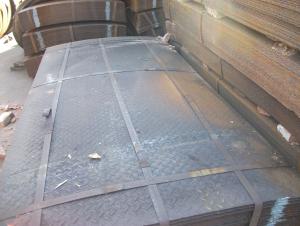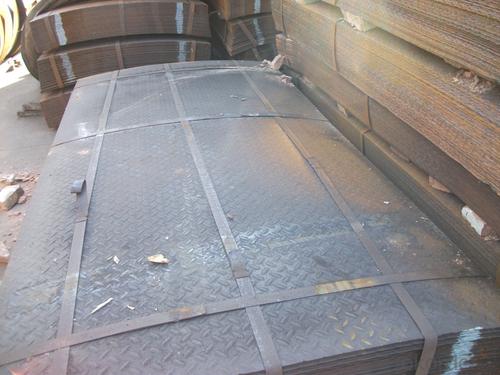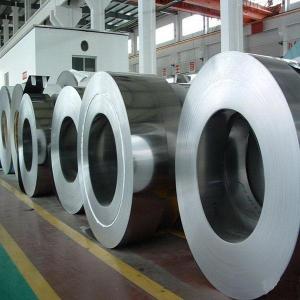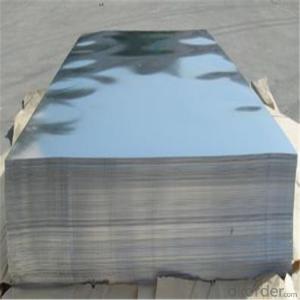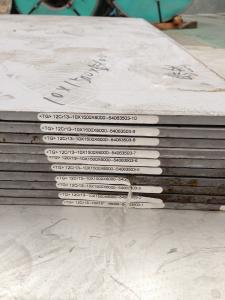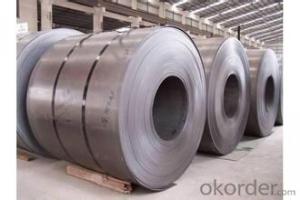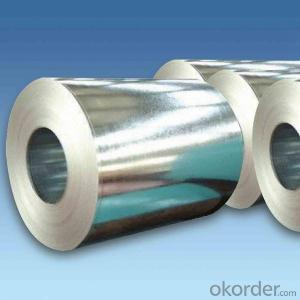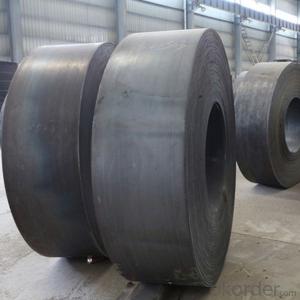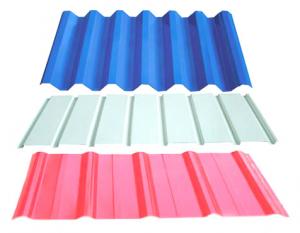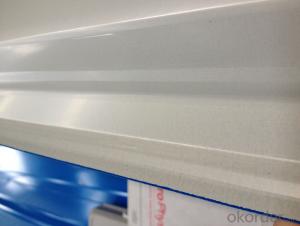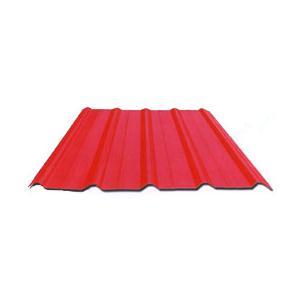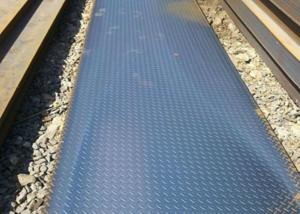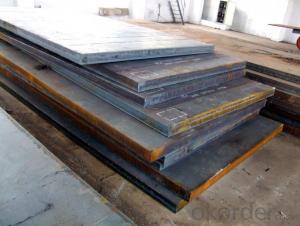HOT ROLLED STEEL SHEET
- Loading Port:
- China Main Port
- Payment Terms:
- TT OR LC
- Min Order Qty:
- -
- Supply Capability:
- -
OKorder Service Pledge
OKorder Financial Service
You Might Also Like
Product Description:
1, carbon steel rimmed steel sheet (GB3274-88)
Steel rimmed steel sheet as the name suggests is made by boiling hot rolled steel plate made of ordinary carbon structural steel. Rimming steel deoxygenation is a complete steel, steel liquid oxygen content is higher, when molten steel after the injection mould, carbon oxygen reaction to produce large amounts of gas, resulting in liquid steel was named after boiling state. Rimming steel with low carbon content, and because no FeSi deoxidization, so steel containing silicon amount <0.07%. Boiling steel outer layer is crystallized in the boiling state, so the surface clean, compact, good surface quality, good processing performance. Rimming steel no large shrinkage hole, deoxidizer used less, low cost of steel. Rimming steel heart of impurities, with the serious segregation, mechanical heterogeneity, more gas in steel, low toughness, cold brittleness and aging sensitivity is larger, the welding performance is poor, so it does not apply to manufacturing under impact load, welding pieces of the structure and other important components work under low temperature.
Steel plate used in the manufacture of all kinds of stamping parts, construction and engineering structure and the structure of the machine is not too important and parts of boiling. The grade, chemical composition and mechanical properties of the material with GB700-79 (88) (technical specification for steel structure of ordinary carbon steel provisions boiling). Hot rolled thick steel plate with thickness of 4.5-200mm. Production units are mainly of Anshan Iron and steel company, Wuhan, Maanshan Iron and steel, TISCO, Chongqing steel, Handan iron and Steel General Factory, Xinyu steel, Liuzhou steel, Anyang steel company, Yingkou plate plant of Tianjin steel and etc..
2 killed steel, plain carbon steel (GB3274-88)
Ordinary carbon steel plate is made of ordinary carbon structural steel hot-rolled steel billet sedation. Deoxidation fully killed steel is steel, steel liquid deoxidation ferromanganese, ferrosilicon and full aluminum ingot casting liquid steel in front, more calm in the mould, does not produce the boiling state, so named for the killed steel. Advantages of killed steel is uniform chemical composition, so the mechanical properties of each part is uniform, the welding performance and good ductility, corrosion resistance is strong. But the surface of poor quality, concentrated shrinkage, higher cost.
Ordinary killed steel is mainly used for structural components, production impact at low temperature welding structure, and other requirements of high strength. The grade, chemical composition and mechanical properties of the material with GB700-79 (88) (technical conditions of steel carbon structure) provisions in killed steel. Size thickness of 4.5-200mm plate. Anshan Iron and steel company, Wuhan Iron and steel are the main production units, Wuyang Steel Corp, Maanshan Iron and steel, TISCO, Chongqing steel, Handan iron and Steel General Factory, Xinyu steel, Liuzhou steel, Anyang, Tianjin, Yingkou Steel Corp steel medium plate plant, a steel, three factory, Shaoguan iron and steel plant and Ji'nan iron and steel factory.
3, low alloy structural steel (GB3274-88)
Low alloy structural steel plate is made of hot rolled low alloy structural steel. Low alloy steel plate is killed steel and semi killed steel sheet. The utility model has the advantages of high strength, good performance, can save large amounts of steel, reduce the structure weight etc.. Low alloy structural steel is more and more widely used in machinery manufacturing and metal structural parts. Thickness of hot rolled steel plate 4.5-200mm. The production unit including Anshan, Wuhan, Wuyang Steel Corp, Maanshan Iron and steel, Chongqing steel, Xinyu steel, Liuzhou steel, Kunming Steel Corp, Tianjin steel, Shaoguan steel plant, Anyang Steel Corp, a steel, three factory and taiyuan.
Steel plate hot rolling with 4, general structure (GB2517-81)
Mainly used for general structure of buildings, bridges, vehicles, etc.. Steel plate (belt) thickness from 1.2-13.0mm; width from 700-1550mm; the length from 2000-12000mm.
5, welded weathering steel with structure (GB4172-84)
Weathering steel is atmospheric corrosion resistant steel. Welding structure with weathering steel is adding small amount of alloying elements in steel, such as steel, chromium, nickel, molybdenum, niobium, titanium, zirconium and vanadium, which form a protective layer on the surface of a metal matrix, in order to improve the weathering steel, and good welding performance. Mainly used in bridges, buildings and other structures.
6, high weatherability, structural steel plates (GB4171-84)
Atmospheric corrosion resistance of weathering steel is economic. Adding small amount of alloying elements in steel, such as steel, phosphorus, chromium, nickel, molybdenum and niobium, titanium, zirconium and vanadium, the level of protection to improve the weathering resistance steel is formed on the surface of the metal substrate. Mainly applicable to buildings, vehicles, towers and other structures.
7, checkered steel plate (GB3277-82)
Pattern plate is the surface with diamond or lentil shaped rib plate. The specifications to the thickness (rib thickness excluding) said. The pattern plate is provided with antiskid effect, often used as a floor, workshop, working frame escalator pedal, the deck of a ship and car plate etc.. The pattern plate material with ordinary carbon structural steel B1, B2 and B3 grade steel rolling form, its chemical composition meet the GB700-79 (technical conditions of steel carbon structure) regulations. Production units are mainly the Anshan Iron and steel and Anyang Steel Corp.
Steel plate for 8, bridge (YB168-70)
The bridge plate is dedicated to the rack railway or highway bridge plate making. Load and impact requirements and has high strength, toughness and bear the locomotive and vehicle, and have good fatigue resistance, low temperature toughness of certain and atmospheric corrosion resistance. Tethered to the welding of bridge steel also has good welding performance and low notch sensitivity. The main structural element for a railway bridge and highway bridge span between 46-160mm. The specifications: thickness from 6-50mm, width, length from 1.0-2.4mm from 2.0-16mm. The production of bridges in China are mainly used steel Anshan, Wuhan steel, steel unit three factory and Chongqing steel etc..
- Q: Are steel sheets suitable for laser cutting or engraving?
- Yes, steel sheets are suitable for laser cutting and engraving. The high intensity laser can easily cut through steel sheets, while engraving techniques can be used to create intricate designs or markings on the surface of the steel.
- Q: What is the average lifespan of painted steel sheets?
- The average lifespan of painted steel sheets can vary depending on factors such as the quality of the paint, the environmental conditions they are exposed to, and the level of maintenance. However, on average, painted steel sheets can last for around 15 to 25 years before they may start to show signs of deterioration or require repainting.
- Q: Can steel sheets be used for automotive fuel tanks?
- No, steel sheets cannot be used for automotive fuel tanks as steel is prone to corrosion and can contaminate the fuel. Automotive fuel tanks are typically made of materials such as high-density polyethylene (HDPE) or aluminum, which are resistant to corrosion and provide better fuel compatibility.
- Q: Are steel sheets resistant to bending or deformation?
- Yes, steel sheets are generally resistant to bending or deformation due to their high tensile strength and rigidity.
- Q: Can steel sheets be used in high-temperature applications?
- Yes, steel sheets can be used in high-temperature applications. Steel is known for its excellent heat resistance and can withstand high temperatures without losing its structural integrity. The specific type of steel and its composition play a crucial role in determining its suitability for high-temperature applications. Certain types of steel, such as stainless steel or heat-resistant steel, are specifically designed to withstand extremely high temperatures and are commonly used in industries such as aerospace, automotive, and manufacturing. These steel sheets can be utilized in various high-temperature environments, including furnaces, boilers, exhaust systems, and heat exchangers, among others. However, it is important to consider factors such as the specific temperature range, duration of exposure, and any potential corrosive elements present in the high-temperature environment to ensure that the chosen steel sheet is appropriate for the application.
- Q: Can steel sheets be bent or folded?
- Yes, steel sheets can be bent or folded. Steel is a highly versatile material that can be manipulated into various shapes and forms. In fact, the ability to bend or fold steel sheets is one of the reasons why it is widely used in construction, manufacturing, and other industries. Bending or folding steel sheets can be achieved through different methods such as press braking, roll bending, or using specialized tools like bending machines. The process involves applying force or pressure to the steel sheet, causing it to deform and take on the desired shape.
- Q: How do steel sheets perform in terms of energy efficiency?
- Steel sheets have good energy efficiency properties due to their high thermal conductivity, which allows for efficient heat transfer. Additionally, steel sheets can be coated with insulating materials to further enhance their energy efficiency.
- Q: Are steel sheets suitable for automotive exhaust systems?
- Indeed, automotive exhaust systems find steel sheets to be a suitable choice. Steel, being highly durable, strong, and resistant to both high temperatures and corrosion, is extensively used in the manufacturing of exhaust systems. Given that automotive exhaust systems endure intense heat and corrosive gases, steel sheets prove to be exceptionally capable of withstanding such conditions. Moreover, steel sheets possess the advantageous ability to be easily molded and welded, thus making them perfectly suited for the intricate shapes and configurations demanded by exhaust system components. Ultimately, steel sheets offer the essential properties and characteristics required for automotive exhaust systems, rendering them an apt selection for this particular application.
- Q: Are steel sheets suitable for exterior wall cladding?
- Yes, steel sheets are suitable for exterior wall cladding. Steel is a durable and strong material that offers excellent resistance to weather conditions, including rain, wind, and sunlight. It is also low-maintenance and can be easily customized to achieve various aesthetic designs. Additionally, steel is fire-resistant, making it a safe choice for exterior wall cladding.
- Q: What is the process of cold rolling steel sheets?
- The process of cold rolling steel sheets involves passing hot-rolled steel through a set of rollers at room temperature to reduce its thickness and improve its surface finish. This process is typically done in multiple passes, gradually reducing the thickness of the steel while maintaining its strength. Cold rolling also imparts desirable mechanical properties to the steel, such as increased hardness and improved dimensional accuracy.
Send your message to us
HOT ROLLED STEEL SHEET
- Loading Port:
- China Main Port
- Payment Terms:
- TT OR LC
- Min Order Qty:
- -
- Supply Capability:
- -
OKorder Service Pledge
OKorder Financial Service
Similar products
Hot products
Hot Searches
Related keywords
